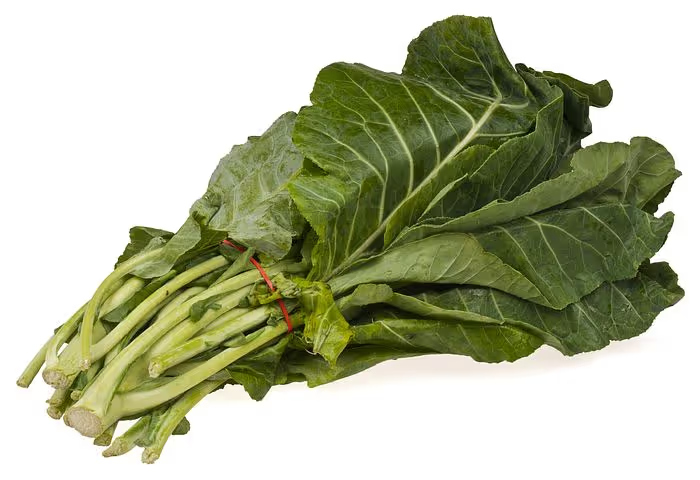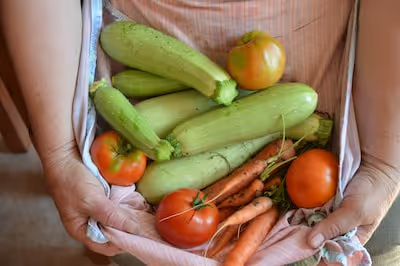Growing Eggplant: A Simple Guide for Garden Success

Growing Eggplant
Growing eggplant rewards your garden with glossy purple fruits, thriving best with full sun and fertile, well-drained soil. To start growing eggplant, sow seeds indoors six weeks before your last frost date, then transplant seedlings outside after soil temperatures reach above 60°F. Regular watering and consistent warmth propel eggplants toward flavorful abundance—keep reading as we break down planting techniques step-by-step.
Cheatsheet: Eggplant Growing Made Easy
🌱 Start Strong
- Soil: Rich, well-drained, pH 6.0–6.8.
- Temp: ≥70°F (21°C) soil; air ≥75°F (24°C).
- Seed: Start indoors 8 weeks before last frost.
- Transplant: Harden off; plant after frost risk.
🌞 Sun & Water
- Light: 6–8 hrs direct sun daily.
- Water: 1–1.5 in (2.5–4 cm) per week; keep soil moist.
- Mulch: Conserve moisture, suppress weeds.
🌸 Feed for Growth
- Fertilize: Balanced 10-10-10 at planting; repeat monthly.
- Side-dress: With compost mid-season.
🌿 Space & Support
- Spacing: 18–24 in (45–60 cm) apart.
- Stakes/Cages: Prevent stem snapping from heavy fruit.
🐛 Pest & Disease Watch
- Monitor: Flea beetles, aphids, spider mites.
- Rotate: Don’t plant after other nightshades.
- Neem oil: Organic pest control.
🔪 Harvest & Enjoy
- Harvest: 70–90 days after planting; fruit glossy, firm, 6–8 in (15–20 cm).
- Cut stems: Use pruners, avoid tearing plant.
- Yield: 10–12 fruits per plant on average.
- Nutrition: High in fiber, antioxidants, potassium.
🛠️ Tools and Products You’ll Need
- Hand trowel
- Pruners
- Stakes or tomato cages
- Watering can or hose
- Eggplant seeds or seedlings
- Compost or all-purpose fertilizer
- Mulch
- Neem oil (optional)
🌍 Why Grow Eggplant?
- One plant yields up to 12 fruits.
- Supports self-sufficiency and fresh eating.
- Rich source of fiber and antioxidants.
Step 1: Start seeds indoors 8 weeks before last frost. Provide warmth and light.
Step 2: Harden off seedlings. Transplant outdoors after all frost risk has passed.
Step 3: Space plants 18–24 in (45–60 cm) apart. Add support.
Step 4: Water regularly. Mulch and feed monthly.
Step 5: Monitor pests. Harvest when fruits are glossy and firm.
-
Growing Eggplant: A Simple Guide for Garden Success
Growing Eggplant rewards patience with glossy fruit that tastes like summer on a plate. I raise it for the silky flesh, the smoky char, and the way an August plant looks like a chandelier of purple.
Heat, light, and timing
Eggplant craves warmth and long, bright days. I transplant only after nights hold above 60 F, 16 C, and soil hits 70 F, 21 C.
Set plants where they get full sun for 8 to 10 hours. Shade cloth at 30 percent helps during heat spikes above 95 F, 35 C, which can stall fruit set.
“Transplant after the danger of frost is past and soil temperatures reach at least 70 F.” — University of Minnesota Extension
Soil prep and pH
I prep a bed rich in compost and aim for soil pH between 6.2 and 6.8. Slightly acidic soil keeps nutrients available and growth steady.
Before planting, I fork in 1 to 2 inches, 2.5 to 5 cm, of finished compost and a gentle organic fertilizer around 3-4-6 at about 1 cup, 100 to 120 g, per plant. Slow and steady wins with eggplant.
Spacing and transplanting
I set sturdy transplants 18 to 24 inches apart, 45 to 60 cm, with rows 30 to 36 inches, 75 to 90 cm. Black plastic or biodegradable mulch warms soil and saves watering.
Harden seedlings for a week, then plant a bit deeper than they sat in the cell. I water in with a touch of seaweed to ease shock.
Water and mulch
Keep moisture even at 1 to 1.5 inches, 25 to 38 mm, per week. Drip lines under mulch make fruit uniform and skin glossy.
Stress yields seeds and bitterness. I tuck 2 inches, 5 cm, of straw or shredded leaves around the root zone to keep soil cool and lively.
Feeding through the season
At first flower, I side-dress with a balanced feed or a tomato blend around 3-4-6 at 0.5 cup, 50 to 60 g, per plant. Too much nitrogen gives leaves and no fruit.
In containers, I switch to a liquid feed every 10 to 14 days. Fish-based 5-1-1 keeps growth steady without tip burn.
Staking, trellising, and pruning
Heavy fruit bends stems, so I stake early. A simple tomato cage or a Florida weave keeps plants upright and clean.
I prune to 2 or 3 main stems and remove suckers below the first fork. Airflow prevents leaf spot and keeps mites in check.
Container growing that actually works
Use 10 to 15 gallon, 38 to 57 L, pots with a high-quality soilless mix. Fabric pots run cooler and drain fast, which eggplant likes.
Compact stars for pots: Patio Baby, Fairy Tale, Hansel, and Gretel. I still stake them, because a gusty afternoon can topple a diva.
Pollination and flower drop
Eggplant self-pollinates, yet bees improve set and shape. If flowers drop, the usual culprits are chilly nights, scorching afternoons, or drought swings.
During a heat wave, I mist foliage at noon and give roots a deep drink in the morning. That small ritual saves a week of bloom.
Pests: battle-tested tactics
Flea beetles love eggplant like I love baba ghanoush. I keep seedlings under row cover until flowering, then spray kaolin clay on leaves for a chalky shield.
Sticky traps guide scouting. If damage exceeds 20 percent of leaf area, I rotate to spinosad or pyrethrin, following labels and timing sprays at dusk for pollinator safety.
Spider mites flare in heat and dust. I rinse undersides twice a week, then use insecticidal soap or release predatory mites if needed.
Aphids cluster on stems. A strong water blast, then a neem oil follow-up, usually resets the balance.
“Eggplant is highly susceptible to flea beetles, which can severely injure young transplants.” — Cornell Cooperative Extension
Diseases: prevention first
Verticillium wilt rides in soils with solanaceous history. I rotate for 3 to 4 years and avoid planting after potatoes, tomatoes, or peppers.
In wet spells, Phytophthora punishes soggy beds. Raised rows, mulch, and disciplined watering keep roots breathing.
Grafted eggplant on Solanum torvum rootstock delivers vigor and better wilt tolerance. I use grafts in tired ground or cool springs.
Harvest cues and storage
Pick fruit when the skin shines and springs back from a thumbprint. Seeds inside should be soft and beige, not brown.
Clip with pruners and wear gloves, since calyx spines can sting. I store at 50 to 54 F, 10 to 12 C, with high humidity for up to a week.
“Chilling injury occurs below 50 F; avoid prolonged refrigeration.” — UC Davis Postharvest Technology Center
Flavor, texture, and yields
Bitterness comes from stress and overmaturity, not variety alone. Even water and timely harvest give creamy flesh every time.
In my trials, a healthy plant sets 6 to 12 market-size fruit per season, about 3 to 8 lb, 1.3 to 3.6 kg, depending on heat and variety.
Top varieties by use
- Classic purple, grilling: Nadia, Galine, Traviata, Black Beauty for open-pollinated seed.
- Asian long: Ping Tung Long, Orient Express, Ichiban for fast, slender fruit that cooks fast.
- Striped and heirloom: Listada de Gandia, Rosa Bianca for sweet flavor and showy skin.
- Baby and container: Patio Baby AAS, Fairy Tale, Hansel, Gretel for balconies and quick harvests.
- Specialty: Kamo for dense Japanese-style flesh, Thai Long Green for curries, Turkish Orange for color and tang.
Seed starting, the easy way
I sow 8 to 10 weeks before my last frost. Bottom heat at 80 to 85 F, 27 to 29 C, gives fast, even germination.
Give seedlings strong light at 12 to 16 hours daily. Brush the tops with a hand daily to thicken stems like a gym session without the sweat.
Companions and rotation
Basil and marigold keep beds lively and pollinators curious. I avoid planting near fennel, which can stunt neighbors.
After eggplant, I move to legumes or leafy greens. Rotation breaks pest cycles and steadies soil biology.
Nutrition note
Eggplant skin carries anthocyanins like nasunin. Per 100 g raw, you get about 25 kcal and roughly 3 g fiber, according to USDA FoodData Central.
Smart shopping list
- Soil thermometer and a simple pH kit for quick field checks.
- Black or biodegradable mulch with drip tape for clean, early harvests.
- Row cover, 0.5 oz fabric, for flea beetles until bloom.
- Stakes or cages, soft ties, and pruning shears for safe cuts.
- Organic fertilizer around 3-4-6 and liquid fish for mid-season boosts.
- Kaolin clay, insecticidal soap, and a hand lens, 10x, for scouting.
Quick fixes: common problems
- Holes in leaves early season: cover plants, apply kaolin, and water steadily.
- Flowers drop in heat: add 30 percent shade cloth and water in the morning.
- Dull fruit with brown seeds: pick sooner and keep plants watered.
- Curved or seedy fruit: improve pollination and steady irrigation.
- Yellow lower leaves: back off on water or feed, then check pH.
Field notes and stats
Black mulch advances first pick by 1 to 2 weeks in my beds compared with bare soil. Early fruit fetches the best price and the best mood.
FAOSTAT reports over 58 million metric tons of eggplant harvested globally, with China and India producing the lion’s share.
Why my plants stay productive
I remove the first two blossoms to push root growth. Then I harvest often, which triggers new flowers and steadier sizing.
By late summer, I clip off small fruit two weeks before frost to ripen what remains. Finish strong, like the last plate from a hot grill.
Trusted references I lean on
- Cornell Cooperative Extension Vegetable Guides for pest thresholds and variety notes.
- University of Minnesota Extension for transplant timing and cultural practices.
- UC Davis Postharvest Technology Center for storage temperatures.
- USDA FoodData Central for nutrition baselines.
- FAOSTAT for production figures and global context.
Frequently Asked Questions About Growing Eggplant
When Should Eggplants be Planted Outdoors?
Plant eggplant seedlings outdoors once nighttime temperatures consistently remain above 55°F (13°C). Ensure daytime conditions have warmed to about 70°F (21°C) or higher to encourage rapid growth and fruit development.
How Much Sunlight Do Eggplants Require?
Eggplants thrive under direct sunlight. Provide your plants with 6 to 8 hours of full sun daily to yield a plentiful harvest. Less sunlight slows growth and reduces fruit quality.
What's the Best Spacing for Healthy Eggplant Growth?
Allow adequate room for roots and airflow. Keep eggplants spaced roughly 18 to 24 inches (45 to 60 cm) apart within rows, and separate rows by about 30 to 36 inches (75 to 90 cm). Proper spacing promotes vigorous plants and minimizes disease.
How Often Should Eggplants be Watered?
Give eggplants approximately 1–2 inches (2.5–5 cm) of water per week, depending on rainfall and soil conditions. Moisture should be even and consistent; irregular watering results in bitterness or tough fruit skins.
Do Eggplants Need Fertilizer?
To support strong growth and abundant fruits, fertilize eggplants carefully. After planting, apply a balanced, slow-release fertilizer. Enhance growth mid-season with an additional application rich in phosphorus and potassium for optimal yield.
When Are Eggplants Ready to Harvest?
Harvest eggplants when the fruits achieve a firm, glossy exterior and ideal size—usually 4–8 inches (10–20 cm) long for most varieties. Picking regularly at peak maturity stimulates the plant to produce more fruit through the growing season.
Growing Eggplant isn’t just about following instructions—it’s about tuning in to your garden’s rhythm. Give these bold nightshades heat, sun, and consistent moisture, and they’ll reward you with glossy, flavorful fruit. Watch for pests, stake your plants if they get top-heavy, and don’t be shy about harvesting early for tender, sweet results. If you’re looking to branch out from eggplant, try companion crops like jalapeño peppers or experiment with something unique like cauliflower. In the end, the real win is bringing fresh, homegrown food to your table—straight from the dirt under your fingernails. Keep it simple, stay observant, and enjoy every bite. That’s the heart of growing eggplant—and good gardening.
The Homesteader's Eggplant Advantage: Sustainable & Nutrient-Rich Harvests
Long-term Seed Preservation
- Allow healthiest fruit to ripen fully to yellowish-brown; seed viability extends to 5 years.
- Dry seeds thoroughly; store in airtight, dark containers below 50°F (10°C).
- Label clearly by date and variety for future planting.
Natural Pest Control Solutions
- Interplant eggplant with marigolds to deter nematodes and aphids.
- Handpick beetles early morning; deposit into soapy water solution.
- Prepare homemade garlic-chili spray weekly; apply evening to repel pests.
Eggplant for Health & Self-Reliance
- Fiber-rich: Supports digestion; 3g dietary fiber per 100g serving.
- Potent antioxidants: Nasunin in purple skin aids cell health.
- Protein complement: Adds substantive nutrients to plant-based diets.
Efficient Preservation & Storage Methods
- Blanch sliced eggplant 4 mins before freezing; preserves color, flavor, nutrients for 8–12 months.
- Sun-dry or oven-dry slices; store sealed to enhance stews and winter dishes.
- Pickle with vinegar solution to maintain flavor, texture, vitamins up to 6 months.
Feed Livestock with Eggplant Scraps
- Chickens safely consume peeled, cooked eggplant; boosts dietary variety.
- Compost raw eggplant leaves and stems to enrich homestead soil fertility.
Find out which plants will thrive in your garden!
Answer a few fun questions and get custom plant recommendations perfect for your space. Let’s grow something amazing together!

start your season





